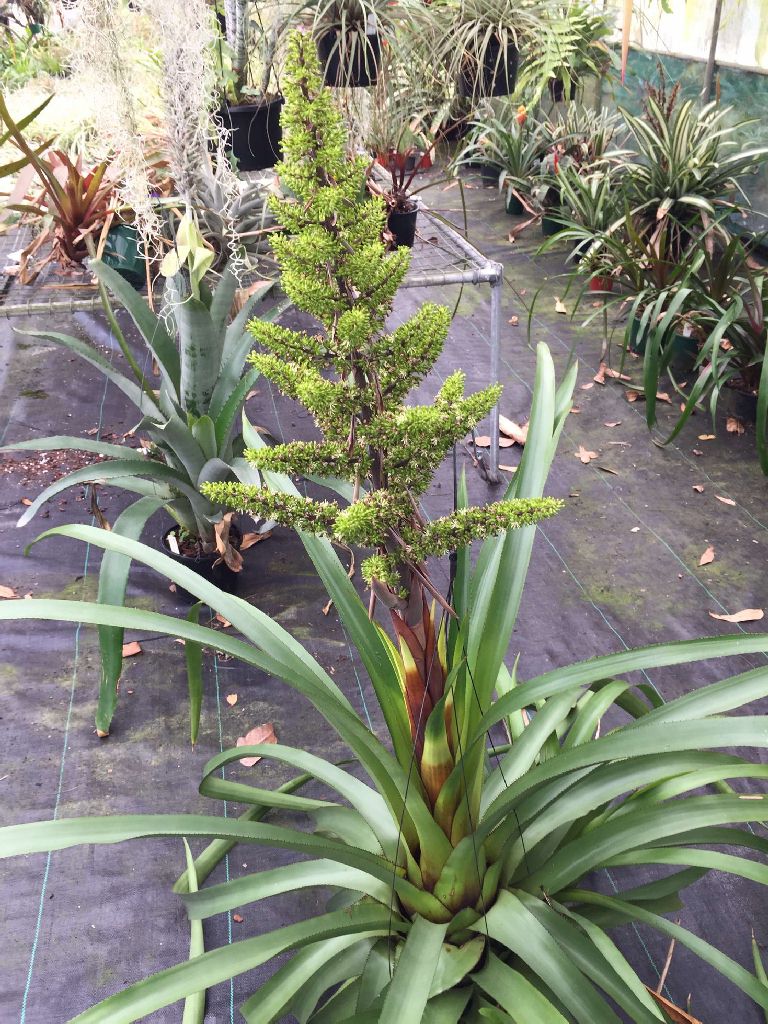


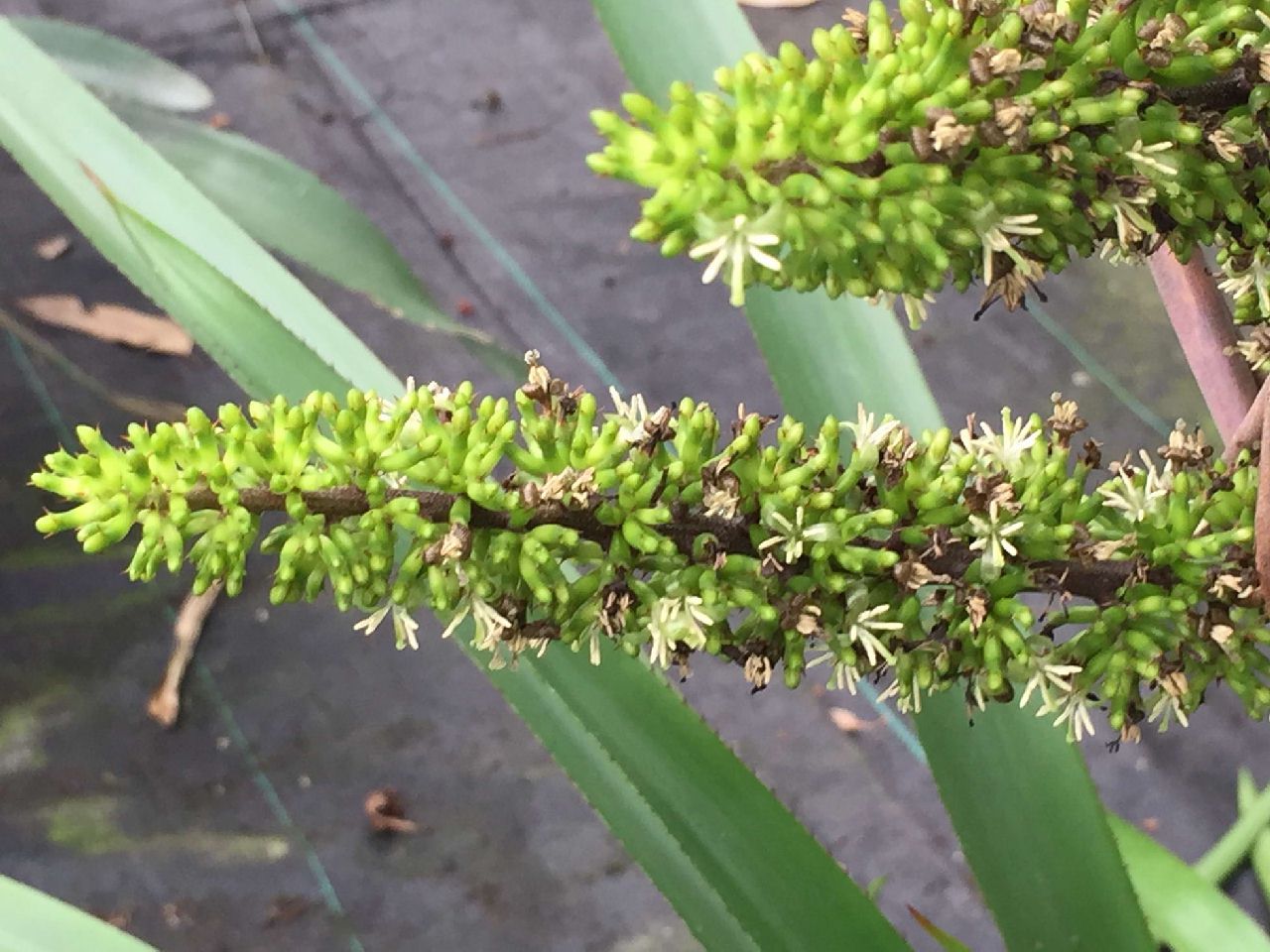
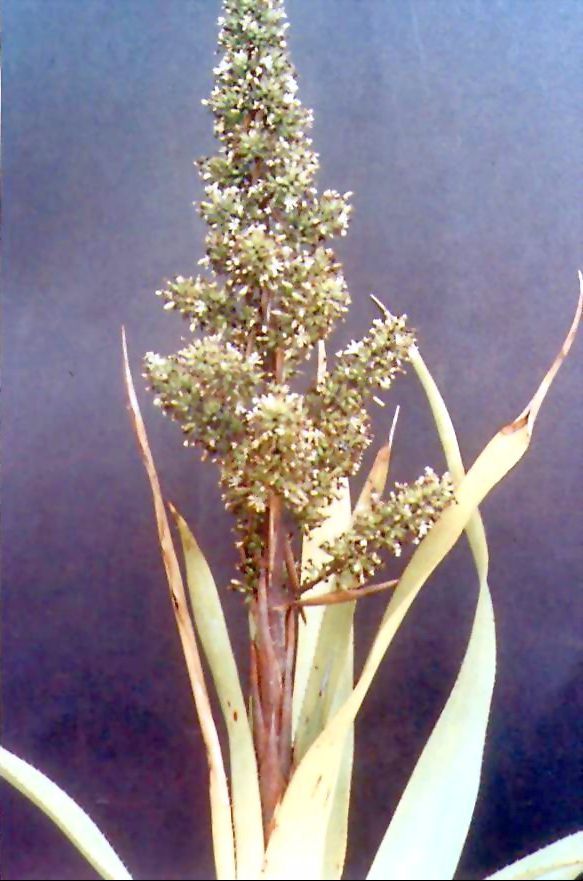
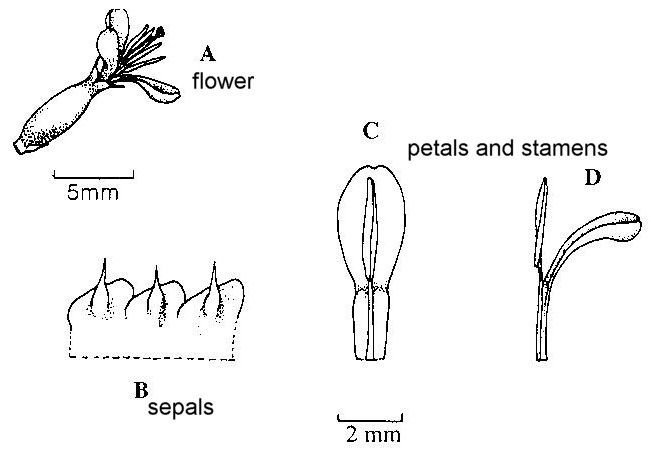

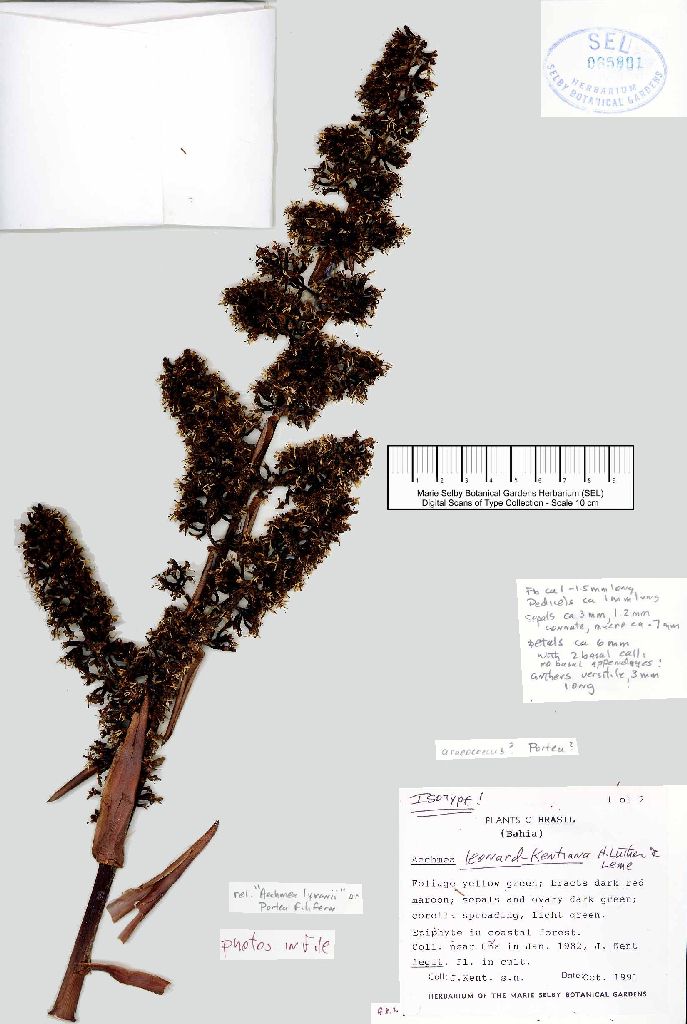
A Aechmea lymanii Weber et Portea filifera L. E. Smith, cui affinis similisque, sed inflorescentia conica non cylindrica, sepalis minoribus differt; a Aechmea floribunda Martius ex Schultes f., cui affinis, sed planta perminore differt.
TYPUS: Brasil, Bahia, near Una, Jan. 1982, J. Kent legit; flowered in cultivation, Oct. 1991, J. Kent s. n. HOLOTYPUS: HB. ISOTYPUS: SEL.
PARATYPUS: Clone of the holotype, flowered in cultivation, 29 Jul. 1995, H. E. Luther s. n. (SEL); Bahia, Ilheus, Manquinho farm, 5 Feb. 1992, L. A. Mattos Silva et al. 1445 (CEPEC).
Many of the genera of subfamily Bromelioideae are problematic, arbitrarily defined and frequently paraphyletic and/or polyphyletic. Some genera have been distinguished by the presence or absence of a single character (i.e. appendages on the petals). This new species illustrates some of these classification problems as its presumed relatives have been placed in three different genera: Aechmea, Portea and Streptocalyx.
PLANT an epiphyte, flowering to 70 cm tall.
LEAVES erect to stiffly spreading, 55-95 cm long, appressed-punctate-lepidote throughout.
LEAF SHEATHS broadly elliptic to ovate, 9-14 x 8-14 cm, somewhat inflated, dark-castaneous especially abaxially.
LEAF BLADES narrowly subtriangular, acute to acuminate, pungent, 2-3 cm wide, serrate with dark 0.5-1 mm long antrorse spines, green to yellow-green.
SCAPE erect, 45 x 1 cm, sparsely pale-floccose, very dark maroon-red.
SCAPE BRACTS erect, imbricate, lanceolate, 8-18 cm long, entire, pungent, thin-coriaceous, dark maroon-red.
INFLORESCENCE conical, 35-40 x 12-17 cm, tripinnate, many-flowered.
PRIMARY BRACTS lanceolate, acute, 5- 75 mm long, entire, much exceeding the sterile bases of the primary branches, mostly reflexed at anthesis, dark maroon-red to reddish brown.
PRIMARY BRANCHES with a 3-35 mm long sterile, naked base, spreading at 45°- 60° from the main axis, 1- 15 mm long.
SECONDARY BRACTS ovate, acute to acuminate, 1-5 mm long, reddish.
SECONDARY BRANCHES with a 1-3 mm long sterile, naked base, polystichously 3 to 8-flowered.
FLORAL BRACTS triangular to filiform, 1-2 mm long.
FLOWERS with a stout 1 mm long pedicel, spreading at 60°- 90° from the axis at anthesis.
SEPALS very asymmetrical, obovate, with a 0.5-1 mm long terminal mucro, 2.5-3 mm long, connate for 1-1.5 mm, very sparsely pale-floccose, dark green.
PETALS free, spathulate, 6 mm long, each with two 2.3-3 mm long basal calluses, spreading and recurving at anthesis, pale green, the epipetalous filaments highly adnate to the petals, the anthers 3 mm long.
STIGMA of the conduplicate spiral type.
OVARY cylindrical, 4-5 mm long, very sparsely pale-floccose, dark green turning black.
Aechmea leonard-kentiana is similar to and related to Portea filifera and Aechmea lymanii both from Bahia. The corolla and androeciun of the latter two species are scarcely known and their generic placement is obviously conjectural. From both, this new species can be distinguished by its conical not densely cylindrical inflorescence and smaller sepals (2.5-3 mm long, not 5-8 mm long). Also related is Aechmea floribunda from the states of Rio de Janeiro and Espirito Santo. This is a much larger plant in all part and was, for many years, classified as a Streptocalyx based on its compound inflorescence with spine-tipped sepals and naked petals. For a discussion of the validity of Streptocalyx versus Aechmea (albeit a short one !) see Smith & Spencer (1992).
At the request of Mr. Jeffrey Kent, the specific epithet honors his father, Dr. Leonard Kent, founder of Kents Bromeliad Nursery in Vista, California.